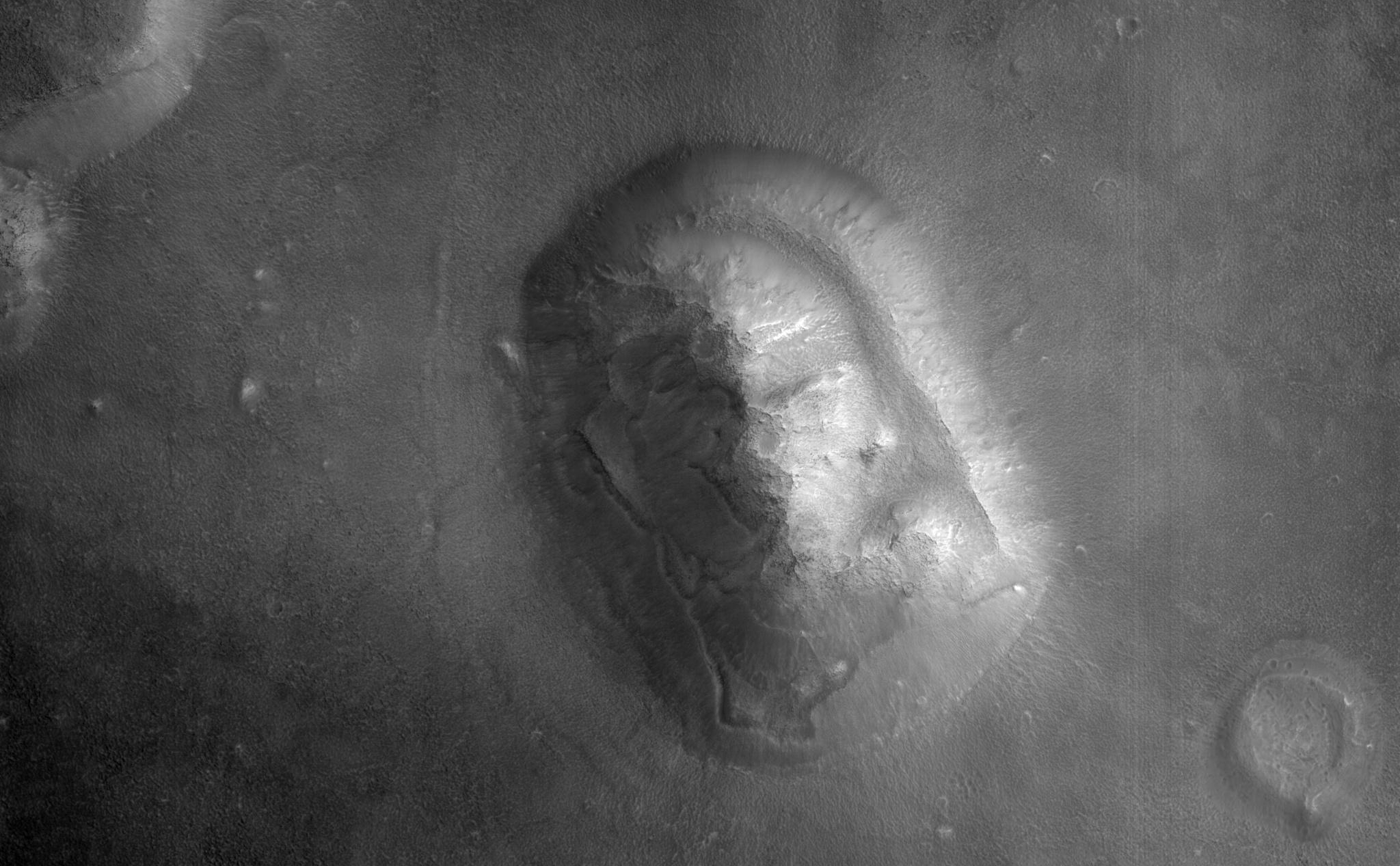Popular Landform in Cydonia Region

| Credit | NASA/JPL/Univ. of Arizona |
|---|---|
| Language |
|
HiRISE captured this image (http://hirise.lpl.arizona.edu/PSP_003234_2210) of an eroded mesa made famous by its similarity to a human face in a Viking Orbiter image with much lower spatial resolution and a different lighting geometry.
Observation Toolbox
Acquisition date: 4 April 2007
Local Mars time: 3:28 PM
Degrees latitude: (centered): 40.7°
Degrees longitude (East): 350.5°
Range to target site: 299.4 km (187.1 miles)
Original image scale range: 29.9 cm/pixel (with 1 x 1 binning) so objects ~90 cm across are resolved
Map-projected scale: 25 cm/pixel and north is up
Map-projection: EQUIRECTANGULAR
Emission angle: 0.3°
Phase angle: 72.8°
Solar incidence angle: 73°, with the Sun about 17° above the horizon
Solar longitude: 213.4°, Northern Autumn
NASA's Jet Propulsion Laboratory, a division of the California Institute of Technology in Pasadena, manages the Mars Reconnaissance Orbiter for NASA's Science Mission Directorate, Washington. Lockheed Martin Space Systems, Denver, is the prime contractor for the project and built the spacecraft. The High Resolution Imaging Science Experiment is operated by the University of Arizona, Tucson, and the instrument was built by Ball Aerospace and Technology Corp., Boulder, Colo.

